Are you feeling frustrated over a software subscription cancellation that didn't go as planned? You're not alone, as many individuals face challenges when trying to manage their subscriptions and resolve billing issues. In this article, we'll guide you through the steps of disputing a cancellation, ensuring you're equipped with the right tools and templates to communicate effectively with service providers. So, let's dive in and empower you to take control of your subscription journey!
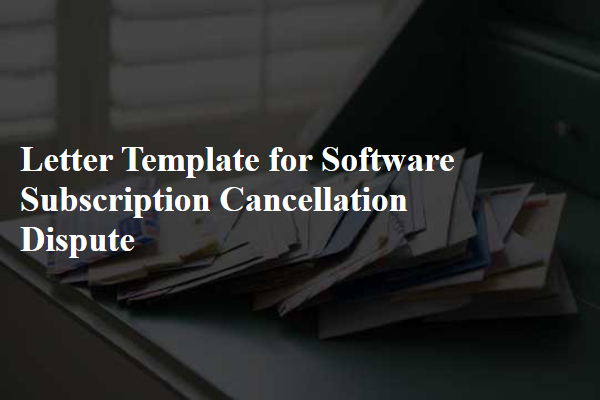
Account details and subscription information
Subscription cancellations often hinge on account details such as the unique user ID, associated email (e.g., user@example.com), and subscription plan type (e.g., Premium Annual). It is crucial to reference specific subscription information, including the original purchase date (e.g., January 15, 2023), renewal date (e.g., January 15, 2024), and billing records that confirm payments (e.g., $99.99 charged on December 1, 2023). Relevant terms and conditions from the service provider's policy, especially regarding cancellation windows (e.g., 30-day notice required) and refund eligibility, can substantiate disputes. Documentation such as transaction receipts or communication logs can strengthen the case.
Clear statement of cancellation request
A software subscription cancellation request involves addressing specific terms outlined in contractual agreements. Typically, users seek to halt payments for services like cloud storage, project management tools, or design software. Notable subscription services include Adobe Creative Cloud, Microsoft 365, or Netflix, each with unique cancellation policies. Users often reference account identifiers, such as email addresses or subscription IDs, to ensure clear identification of the service in question. Additionally, explicitly mentioning any dissatisfaction, breach of terms, or failure of service delivery strengthens the request, especially within a specified timeframe. Users may also cite customer service interactions, including dates and representative names, to substantiate claims.
Reference to terms and conditions
Software subscription cancellations often lead to disputes over terms and conditions outlined in the service agreement. Users may reference specific clauses regarding cancellation policies, such as renewal periods (usually 30 days in standard contracts) and notice requirements (often written notification at least 7 days before the renewal date). Additionally, misunderstandings may arise concerning refund eligibility, with many companies stipulating non-refundable fees for certain subscription tiers. Proper documentation of communication with customer support (including dates and representatives' names) can influence the resolution process. Engaging with official channels, such as the Better Business Bureau or consumer protection agencies, may provide further avenues for dispute resolution if direct communication with the service provider fails. These terms, typically accessible through the company's website, serve as the backbone of any cancellation discussion.
Evidence of previous communication attempts
Due to unresolved issues with a software subscription, multiple attempts to communicate cancellation formally occurred. First contact took place on March 15, 2023, via email, detailing dissatisfaction with features not meeting expectations. A follow-up email sent on April 10, 2023, reiterated these concerns along with a request for cancellation confirmation. On May 5, 2023, a customer support call was made, exceeding 30 minutes, during which a representative promised to escalate the request but failed to provide written confirmation. As of June 1, 2023, no acknowledgment received regarding the cancellation, despite these documented efforts. Such lack of response raises significant concerns regarding consumer rights within subscription services.
Request for confirmation and resolution timeline
A software subscription cancellation dispute can arise when a user wishes to terminate services from platforms such as Adobe Creative Cloud or Microsoft Office 365. Users often expect a seamless cancellation process; however, discrepancies in billing practices can lead to confusion. For instance, a user might find unauthorized charges appearing on their credit card statement weeks after their intended cancellation date, due to advanced billing cycles or overlooked policy terms. Key details, including subscription IDs, cancellation dates, and customer service interactions, become crucial for resolution. Users should request formal confirmation of cancellation, along with a clear timeline for resolving any outstanding disputes to minimize stress and avoid further charges.
Letter Template For Software Subscription Cancellation Dispute Samples
Letter template of software subscription cancellation resolution request
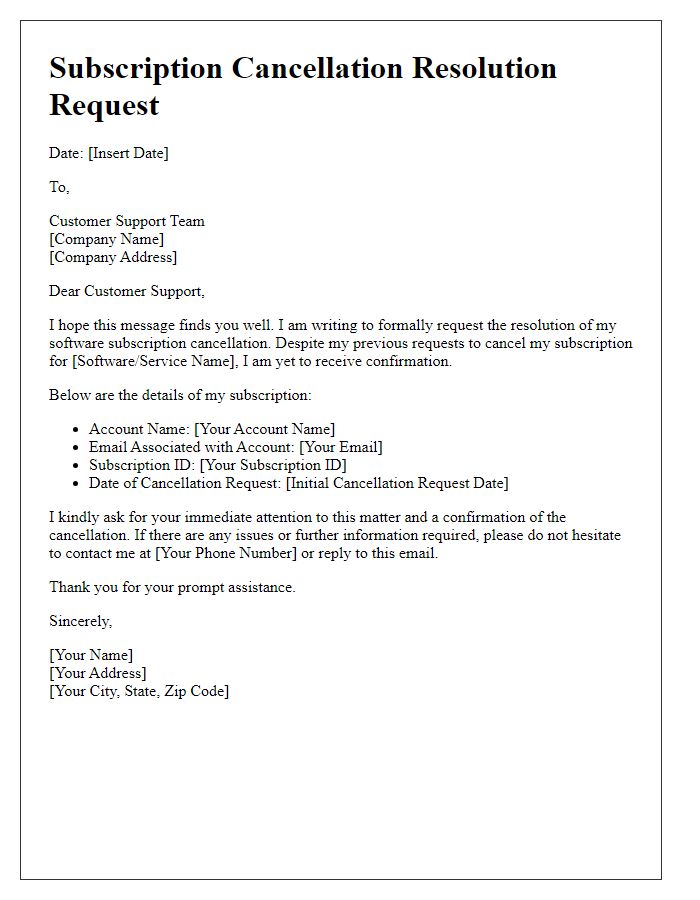

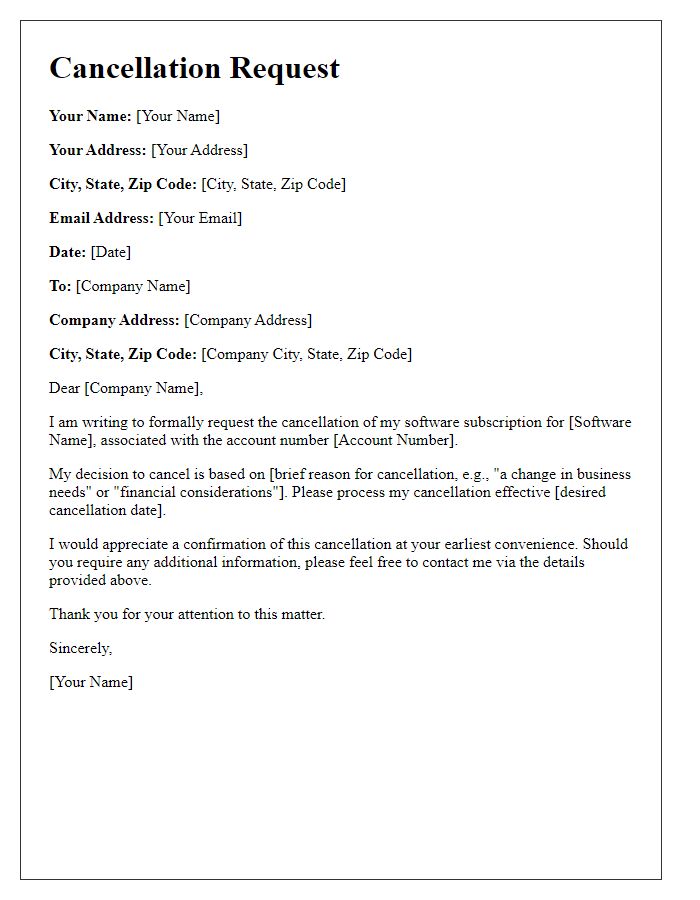
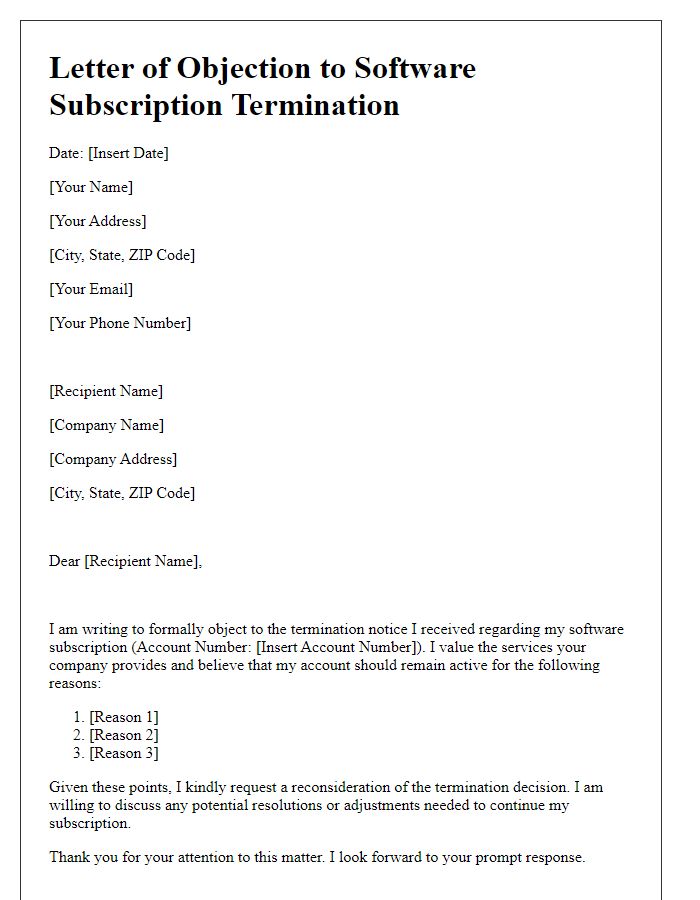
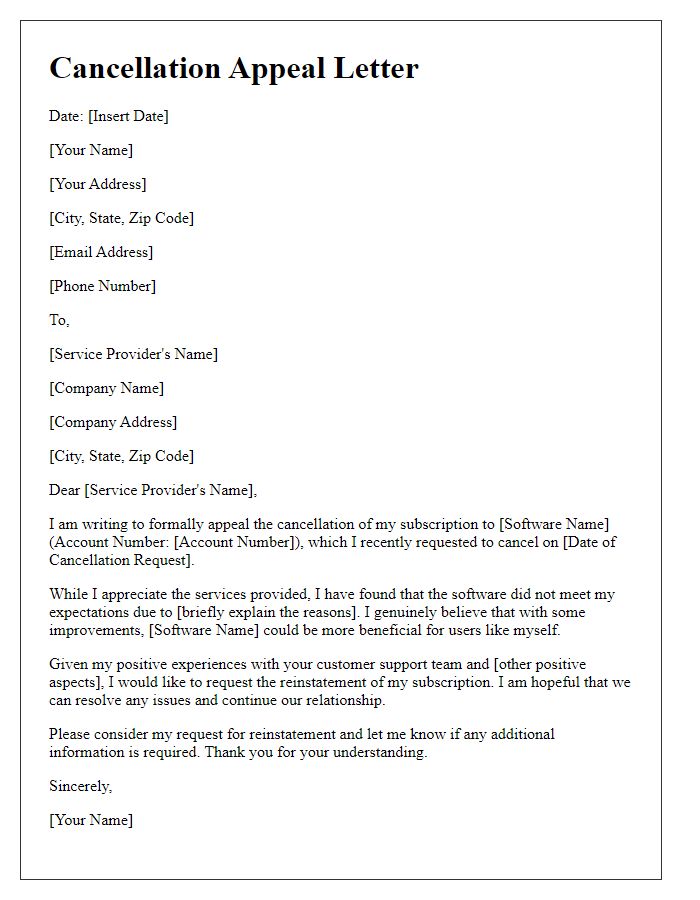
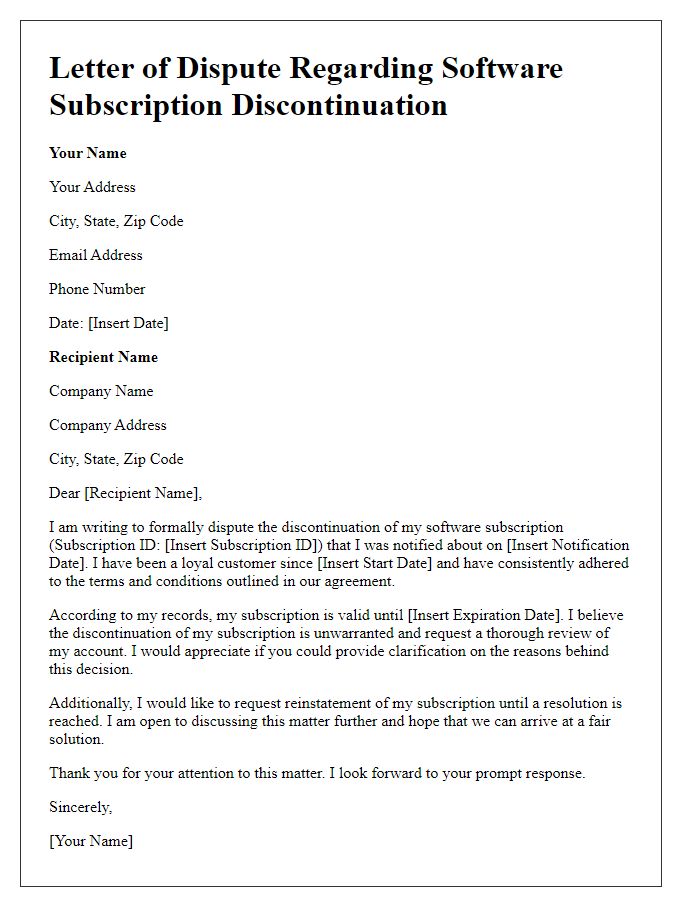
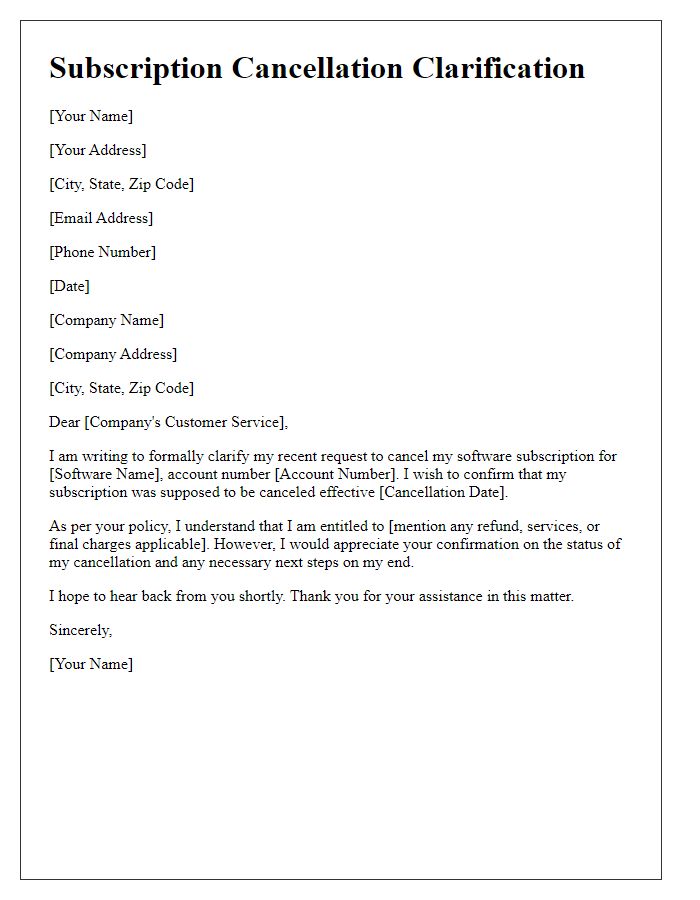
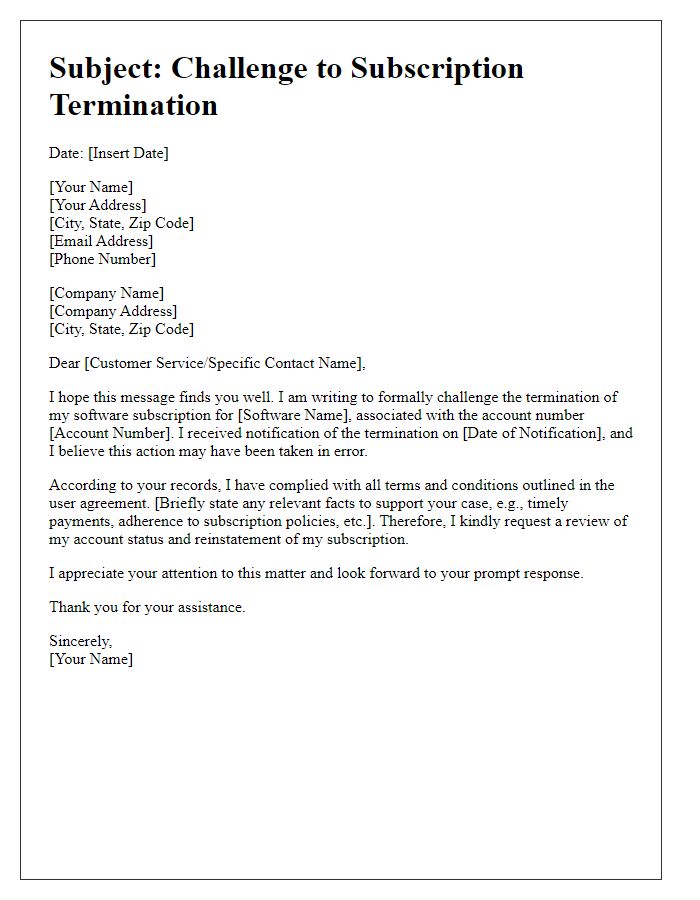
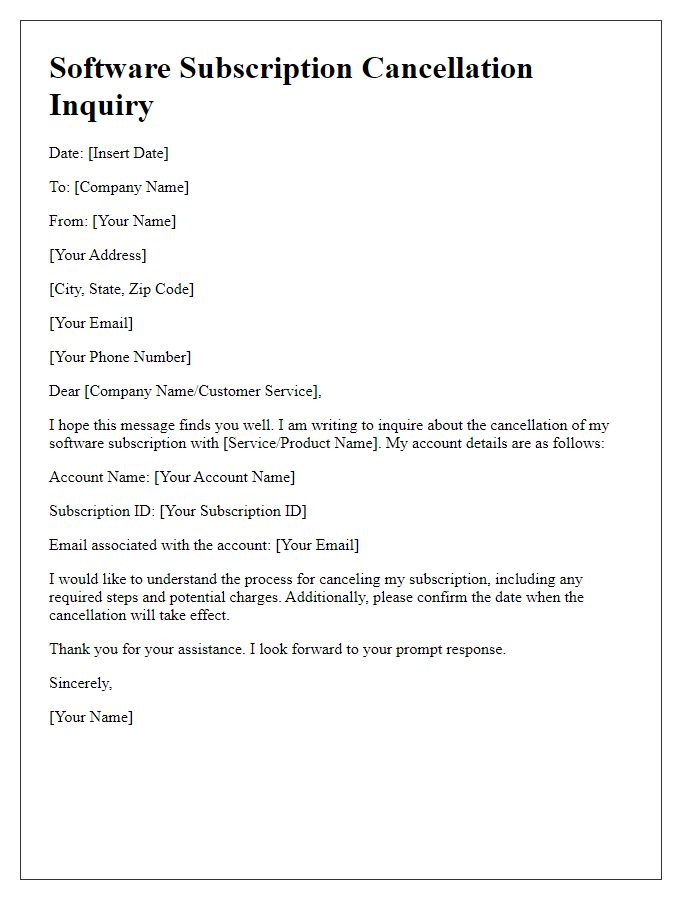
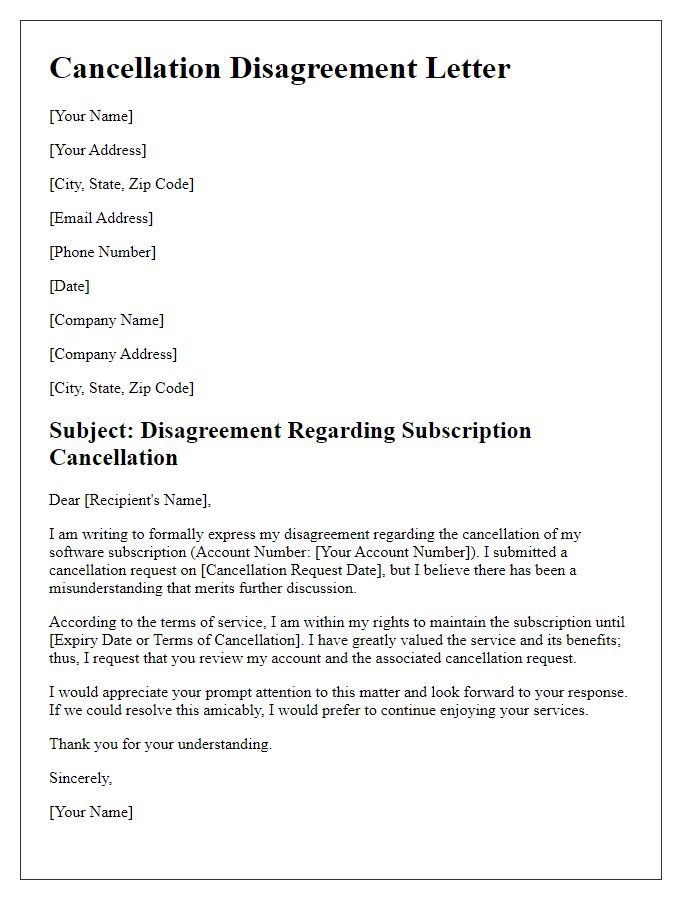
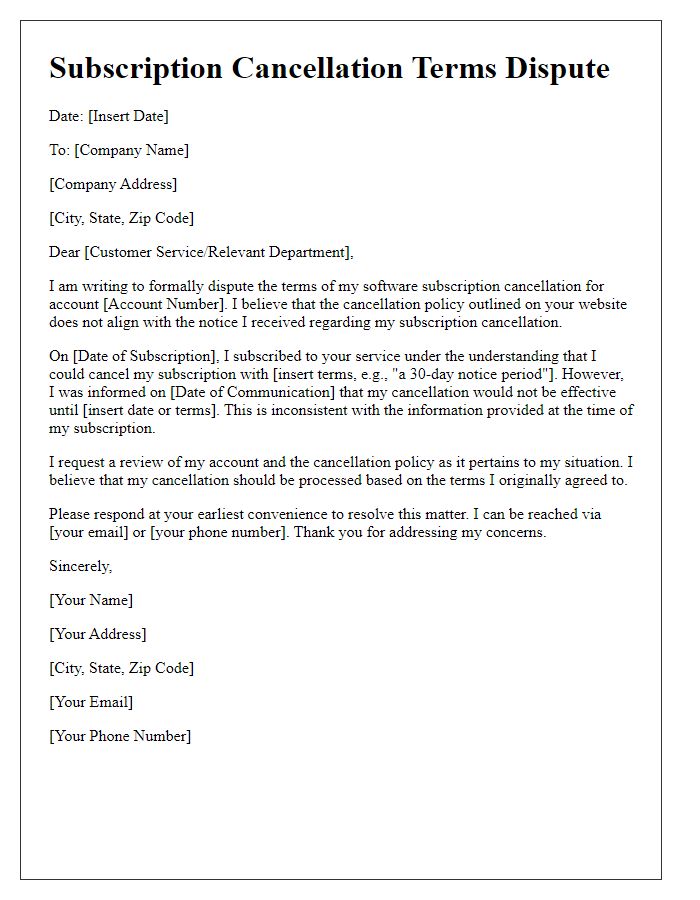

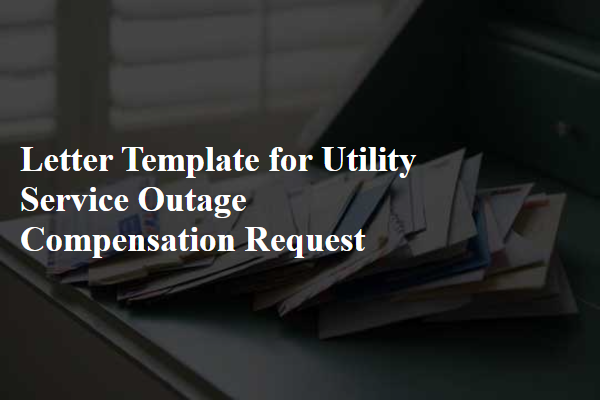
Comments